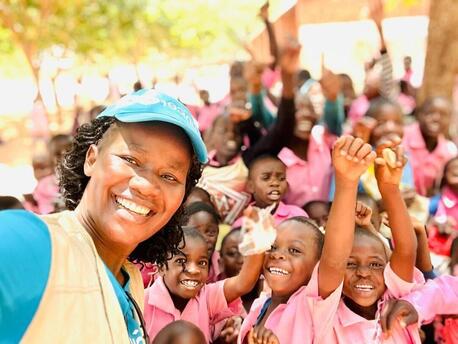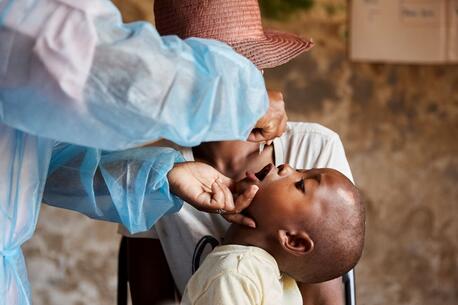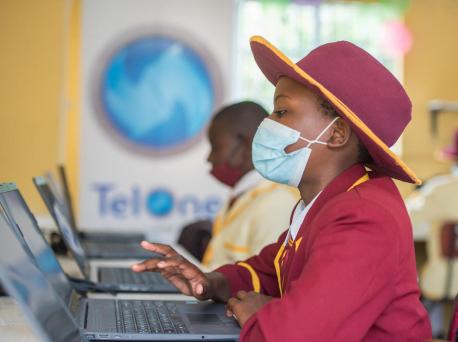
Giga Is Connecting World's Students to Internet, One School at a Time
How a UNICEF-ITU initiative is using emerging tech to close the global digital divide.
At the height of the COVID-19 pandemic, up to 1.6 billion children were affected by school closures. Many children were able to attend online classes, but hundreds of millions were not. Today, an estimated 1.3 billion children and young people still cannot access the internet at home, and only around half of the world's schools are able to provide online services, leaving students cut off from internet resources and the opportunity to learn digital skills.
Digital exclusion particularly affects those who are already most likely to be the farthest behind — girls, children with disabilities, and children growing up in poverty — exacerbating the global learning crisis and perpetuating the inequalities that divide countries and communities.
Lack of access to the internet perpetuates cycles of exclusion and poverty
Giga, a joint initiative of UNICEF’s Office of Innovation and ITU’s Telecommunications Development Bureau, was created to level the playing field. Their plan is nothing short of ambitious: Connect every school in the world to the internet by 2030.
Launched in 2019, Giga works with 14 corporate and nonprofit partners to map schools’ internet access, create models for innovative financing and support government contracting for connectivity.
To date, Giga has mapped 1.1 million schools across 50 locations on Project Connect, the open source platform that provides a real-time display of access and needs for funders, governments and service providers. Since the initiative's launch, more than 2.1 million students have been connected to the internet in over 5,000 schools across Africa, Central Asia, Latin America and the Eastern Caribbean.
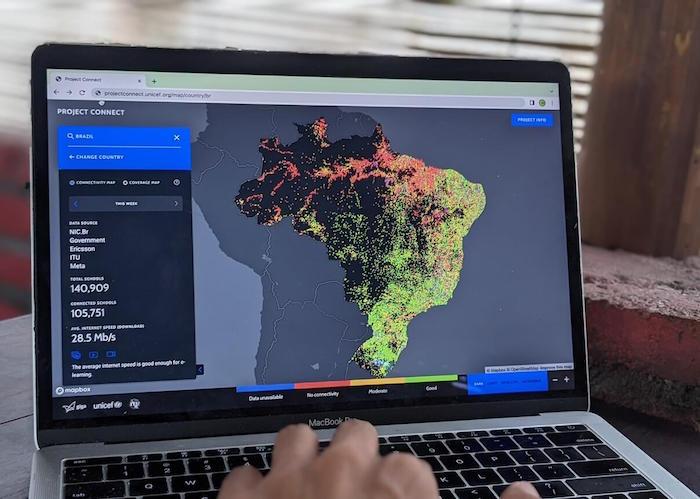
A Project Connect map of Brazil shows schools with internet access, marked in green (good connectivity) and yellow (moderate connectivity). Schools without internet access are highlighted in red. © UNICEF/UN0697960
Leveraging advanced technologies to achieve connectivity goals
To connect schools and furnish them with the necessary infrastructure, the Giga team first needs to find out where they are. Information about school locations might appear easy to access, but many countries do not have such records. One solution, physically deploying people on the ground to collect such data, is time-consuming and difficult, especially in remote areas. As a result, Giga relies on satellite imagery, artificial intelligence (AI) models and telemetry data that show ground-level detail about buildings to fill information data gaps. The satellite imagery datasets feed into AI models that are trained to distinguish the structures that are schools from those that are not.
In 2021, Dell Technologies joined forces with UNICEF USA to support Giga's mission, providing high-performance computing (HPC) units.
Using new technological capabilities provided by Dell helped shorten time frames considerably. "[W]e were able to accelerate development of our AI model for detecting schools from high-resolution satellite imagery from a year to a matter of weeks,” says Do-Hyung Kim, Data Science Lead, Giga, UNICEF.
“We were excited to develop a custom solution for Giga with what they were looking to accomplish,” says Quy Ta, a senior manager systems development engineer who manages the HPC engineering team at Dell Technologies.
Once the schools are mapped, an additional layer of intelligence — connectivity and its strength — can be layered on, and then connectivity can be strategically delivered to zones that are more severely lacking.
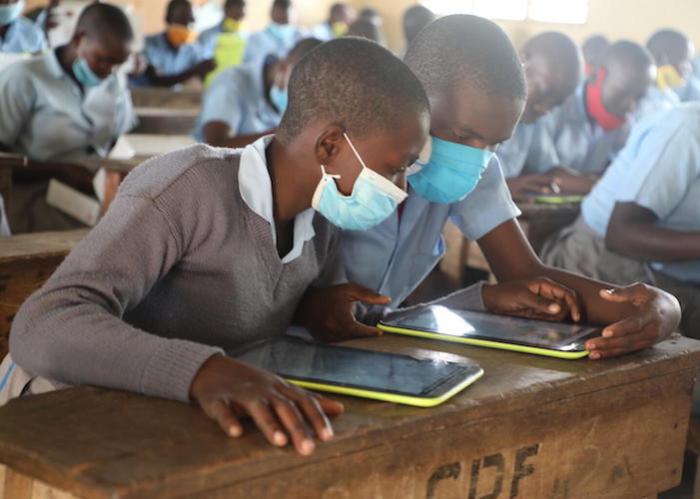
Students in Mombasa City, Kenya, work together at a school connected to the internet through Giga, a joint initiative of UNICEF’s Office of Innovation and ITU’s Telecommunications Development Bureau. © UNICEF/UN0720109/
Sudan as use case
The AI mapping method is already registering results for the initiative. In Colombia, for example, Giga has applied the technology to map the location of 7,000 schools that were not part of the government's official datasets.
Similar implementations in Sudan have also been successful. The final AI model for Sudan can spot schools from satellite imagery with roughly 91 percent accuracy and provide more precise location information. Giga plans on bringing in local volunteers from Youth Mappers, an organization working to develop free geographical data, to validate location predictions.
Scaling through AI
Next steps include using the developed AI models to assist in mapping new countries and regions and enhancing them so they can cover more areas, and rapidly.
“Dell's HPC solutions will continue to be important for Giga's data science work, as we seek to scale up our AI development capabilities to locate previously unmapped schools globally, which is the first step to connecting every school to the internet,” Kim says.
Giga is also exploring the use of blockchain to raise funds for school connectivity, including the recent launch of Patchwork Kingdoms, the largest NFT collection across the United Nations. The NFT artwork was derived from Giga’s mapping data on schools and their connectivity levels. To date, the collection has raised over $700,000 for school connectivity.
Support UNICEF's programs to ensure every child receives a quality education. Your contribution can make a difference. Please donate.
UNICEF does not endorse any company, brand, product or service.
HOW TO HELP
There are many ways to make a difference
War, famine, poverty, natural disasters — threats to the world's children keep coming. But UNICEF won't stop working to keep children healthy and safe.
UNICEF works in over 190 countries and territories — more places than any other children's organization. UNICEF has the world's largest humanitarian warehouse and, when disaster strikes, can get supplies almost anywhere within 72 hours. Constantly innovating, always advocating for a better world for children, UNICEF works to ensure that every child can grow up healthy, educated, protected and respected.
Would you like to help give all children the opportunity to reach their full potential? There are many ways to get involved.



